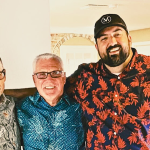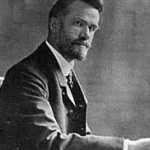Anyone who has leafed through an airline travel magazine can probably name a number of ways that they stand out from other publications. Flying just this week, I saw many of the same messages I’ve seen in the past. Multiple advertisements promise to help professional and ‘quality’ men find the ‘quality’ women they deserve. Other marketing materials identify the best steakhouses, the best plastic surgeons, or the newest (expensive) sports equipment.
This time around, a particular advertisement caught my eye precisely because it did not fit as well with the others. Still targeted towards an upper-class, internationally networked, professional male population, a child’s eyes took up the top quarter of the page. Under the image was the following caption:
I’m not a tourist attraction.
It’s a crime to make me one.Stop child sex tourism.
www.seekjustice.org
Although the audience was the same, this advertisement, sponsored by World Vision International (WVI), with support from U.S. Immigrations and Customs Enforcement, speaks a very different message. It is part of a broader initiative to combat the growing problem of exploitation, enabled in part by the power this magazine’s audience holds.
Sex trafficking and forced sexual labor is a growing problem. Along with other forms of forced labor, it is an issue that evangelicals and other faith-based organizations are increasingly protesting. Recent statistics released last month from the International Labor Organization suggest that approximately 20.9 million people globally are victims of forced labor. 4.5 million of those are exploited for their sexual labor. If we consider the millions of other sex workers who “voluntarily” chose the trade, often with little real choice, the numbers rise significantly. Evangelicals, alongside of feminist groups and other concerned about human rights, have worked together in coalitions (such as the Coalition Against Trafficking in Women) to support legislation and lead campaigns aimed at ending sex trafficking and forced sexual labor. The International Justice Mission is one organization that has galvanized attention in the evangelical community to this problem; they work to change structures, and hold accountable those committing and enabling the abuse.
The location of this particular advertisement speaks to the larger context in which forced sexual labor occurs. The audience for this magazine is the opposite of the image in the advertisement. The picture is of a presumably non-Western girl. We know that children and women who are predominantly the victims of trafficking; further, it is the ‘other,’ the foreigner, that is often trafficked. Although discussing the commercial sex industry more generally, Kevin Bales notes how power differentials play into the growth of sex trafficking, specifically in Thailand (“Because She Looks Like a Child” in Woman: Nannies, Maids, and Sex Workers in the New Economy, edited by Barbara Ehrenreich and Arlie Russell Hochschild, Harry Holt Publishers, 2002):
Commercial sex is a legitimate form of entertainment and release. It is not just acceptable: it is a clear statement of status and economic power. Such attitudes reinforce the treatment of women as mere markers in a male game of status and prestige (216).
I have been encouraged by religious actors’ responses to the devastating problem of forced sexual labor. Teaching at Wheaton College, I see some of the consequences of this engagement: many of my students are committed to working for social change in this area. They see the responsibility for the church to mourn with the victims of sexual violence, and to struggle for their justice.
At the same time, my hope continues to be that the issue of sex trafficking will also draw attention to the problem of sexual violence and sexual commodification committed in less egregious ways, but ones that still strip women (and children) around the world of their dignity. Sexual violence is an issue that plagues the church. While some religious communities give significant attention to these issues, many do not. Scholars consistently try to correct the myths surrounding the violence: that it exists only in certain communities, that victims are somehow responsible, that is is mainly due to alcohol or drug abuse. Instead, they point to ways such violence is made possible through the power dynamics at work (as highlighted by Bales above).
The work of groups like WVI, IJM, and many others in the faith community to combat sex trafficking is important and necessary. There still remains, however, a need to reflect more on the norms that also contribute to a demand for human trafficking.
Women are for the consumption of men.
Sexuality is something to be taken, or something that can be bought and sold.
Those who are foreign, or racially and ethnically different, are less human.
Men are naturally sexually deviant.
While few might fully endorse the statements above, these norms are present are various levels throughout our culture–unfortunately, even in the church. Continuing to address them is vital in struggles not just against sexual trafficking, but also other forms of sexual exploitation and violence.











